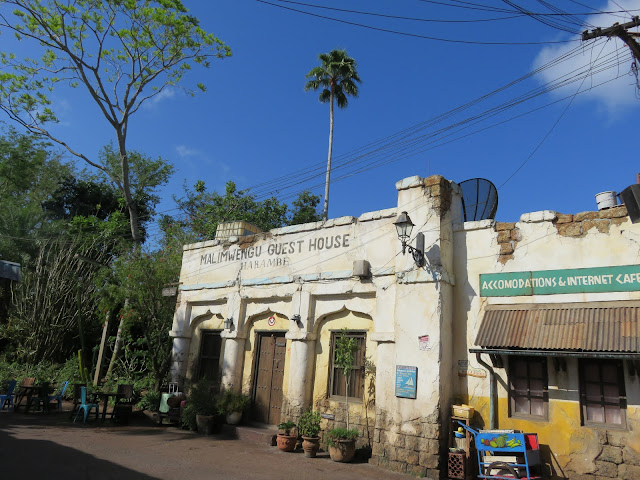Epcot Center included countries from all regions of the world in the World Showcase on opening day, with one extremely notable exception. Today we are taking you through the plans for the Equitorial Africa pavilion planned for Phase 2 or Epcot Center.
Epcot was notably without an African pavilion when the park opened to the public, but one was announced to be coming at a later date, and unlike other announced pavilions, it was in active development and is likely the closest the park has come to getting a pavilion without one actually getting built.
It was present in the opening ceremony, and had fully designed attractions, (yes multiple attractions) and, actual sponsors.
This attraction would be the first in a series of package pavilions Disney would design to get around the problem they faced getting sponsors in the first phase of the park. The intention was to get a variety of countries to sign on to potentially split the cost of a pavilion between them, with bids also accepted from significant private corporations. It would attempt to encapsulate an entire region, not a single country.
Because of its scale it would take one of the largest expansion pads on the World Showcase in the current home of the African Outpost.
There would be three main attractions planned for this pavilion, and a fourth planned for later expansion.
The first would be a treehouse themed attraction that would use a variety of screen and practical effects to make you feel like you were in the jungles of Africa on a safari. This would have been a walkthrough of the attraction, and likely have been the least elaborate of the attractions.
The next was a film based attraction known as the Heartbeat of Africa. The film was actually entirely completed and would have followed a musical history of Africa, featuring a practical preshow. This would have been a 4D film featuring in-theater effects.
The final main attraction was to be known as Africa Rediscovered. This was a more traditional exploration of African history. Significantly, it was spearheaded by Alex Healy, the author of the novel Roots: The Saga of An American Family, the inspiration behind the iconic television series. This would have examined the impact of Africa as an origin of civilization. Healy was an advisor for the whole pavilion, but this was the project he was most involved in. This was also reportedly entirely completed by the time the pavilion was finished.
On top of these that would be available on opening day, there were also blue sky plans for a safari attraction that would eventually develop into Kilimanjaro Safari at Disney's Animal Kingdom.
Additional things at the pavilion would be a collection of shops, cultural exhibits, live performances, and restaurants.
This pavilion had several sponsors lined up and really almost got built, as evidenced by how far the development of the attractions went. So what happened?
As this pavilion was being planned, political issues were rising in the host region that made this pavilion problematic for Disney. At the same time budgets were being tightened across Epcot Center, and this was one of many that were cut in a wave that ended a majority of projects planned for Epcot Center's phase 2.
This completely designed and in progress pavilion would begin a long thread of canceled pavilions for Epcot Center, and leave a gaping hole in Epcot's World Showcase. A lightly themed African pavilion would end up as the occupant of this pavilion's planned location.
There would be proposals for this land over the years, specifically the Russia Pavilion, but it remains almost entirely empty to this day.
This pavilion would not die with its cancelation and would go on to inspire several actual Disney Parks projects and other projects.
Disney had collected a set of artifacts from Africa for this project and it would become the basis for the Africa land of Harambe in Disney's Animal Kingdom, over fifteen years after the Epcot land was initially planned.
Much of the research that went into this pavilion provided the basis for this land, the main attraction, Kilimanjaro Safari, was based on a blue sky proposal developed for the Epcot land.
Harambe really did what the Epcot Pavilion wanted to, present a cultural representation, only in the new park it was told through the lens of animals as opposed to through the lens of music and civilization.
This same collection of artifacts would also be used to inspire portions of Disney's The Lion King and artifacts would even be used in live-action Disney films.
After decades of occasional use, the artifacts would find a permanent home in 2005 when Disney donated the collection to the Smithsonian under the direction of Michael Eisner in one of his final acts as CEO.
This pavilion would have been one of the most impressive in Epcot, and while it is a shame it didn't happen, the history of Walt Disney World may have been very different if it had happened.
This pavilion inspired large parts of Disney's Animal Kingdom, including its opening day headliner attraction, and this park may never have happened if Epcot had gone through with this pavilion.
The real tragedy is that two reportedly complete films from this land have never been released, one with a historic writer behind it. These are likely sitting in the Disney Archives somewhere, not having been seen in decades. It is unlikely the will ever be released in any fashion, although we can hope for a Disney Plus release someday.
Thanks for reading and be sure to check out the rest of this series here. Also, be sure to come back next week as we explore the lost Japenese Omnimover of Epcot Center.


Comments
Post a Comment